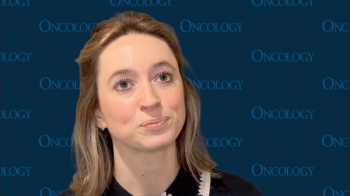
Maintenance Lenalidomide May Have Role in High-Risk Chronic Lymphocytic Leukemia
A new study found that lenalidomide was effective as a maintenance therapy after first-line treatment in patients with chronic lymphocytic leukemia who did not achieve minimal residual disease negative status after chemoimmunotherapy approaches.
Lenalidomide was effective as a maintenance therapy after first-line treatment in patients with chronic lymphocytic leukemia who did not achieve minimal residual disease negative status after chemoimmunotherapy approaches, according to the results of the CLLM1 study
However, in an
CLLM1 investigators led by Anna Maria Fink, MD, of the University Hospital of Cologne, Germany, agreed, writing, “As there are currently rapid therapeutic advances for patients with chronic lymphocytic leukemia, including kinase or BCL2 inhibitors, the results of this study are unlikely to affect the current first-line therapy for chronic lymphocytic leukemia. However, lenalidomide might be considered in selected high-risk patients where first-line therapy does not achieve a deep minimal residual disease negative remission of chronic lymphocytic leukemia or where inhibitors are not available.”
The study was designed for patients aged 18 or older with previously untreated chronic lymphocytic leukemia who responded to chemoimmunotherapy 2 to 5 months after completion of first-line therapy and who were assessed as having high risk for an early progression with at least a partial response after 4 or more cycles of first-line chemoimmunotherapy. Patients had to have high baseline minimal residual disease levels or intermediate levels combined with unmutated IGHV gene status or TP53 alterations.
The researchers screened 468 patients; 379 were not eligible. Trial recruitment was closed early for poor accrual after 89 of 200 patients were randomly assigned 2:1 to either lenalidomide or placebo.
Of assigned patients, 93% of patients assigned to lenalidomide had at least one dose. Treatment with lenalidomide significantly delayed progression compared with placebo. With a median observation time of about 18 months, the hazard ratio for progression-free survival was 0.168 (95 % CI, 0.074–0.379; P < .0001). Median progression-free survival was 13.3 months for placebo and not yet reached for lenalidomide.
The researchers noted an advantage for treatment with lenalidomide for patients with baseline intermediate or high minimal residual disease levels. Among patient with intermediate minimal residual disease, the median progression-free survival was 19.4 months for placebo and not yet reached for lenalidomide (P = .0012). In the high minimal residual disease group, the median progression-free survival was 4.4 months for placebo compared with 32.3 months for lenalidomide (P = .00033).
The most commonly occurring adverse events were skin disorders, gastrointestinal disorders, infections, hematological toxicity, and general disorders. There was one fatal adverse event reported in each study arm.
“Given the convincing results of this study, the role of lenalidomide in chronic lymphocytic leukemia might be further investigated, in particular in high-risk patients with chronic lymphocytic leukemia after first-line therapy with novel agents,” the researchers wrote. “Lenalidomide or the newer immunomodulatory treatments might play an important part in therapy concepts after the failure of the innovative combinations or for maintaining response to novel combinations in very high-risk chronic lymphocytic leukemia.”
Newsletter
Stay up to date on recent advances in the multidisciplinary approach to cancer.





















































































